St. Stephen’s Cathedral: Vienna’s Timeless Cultural and Spiritual Beacon
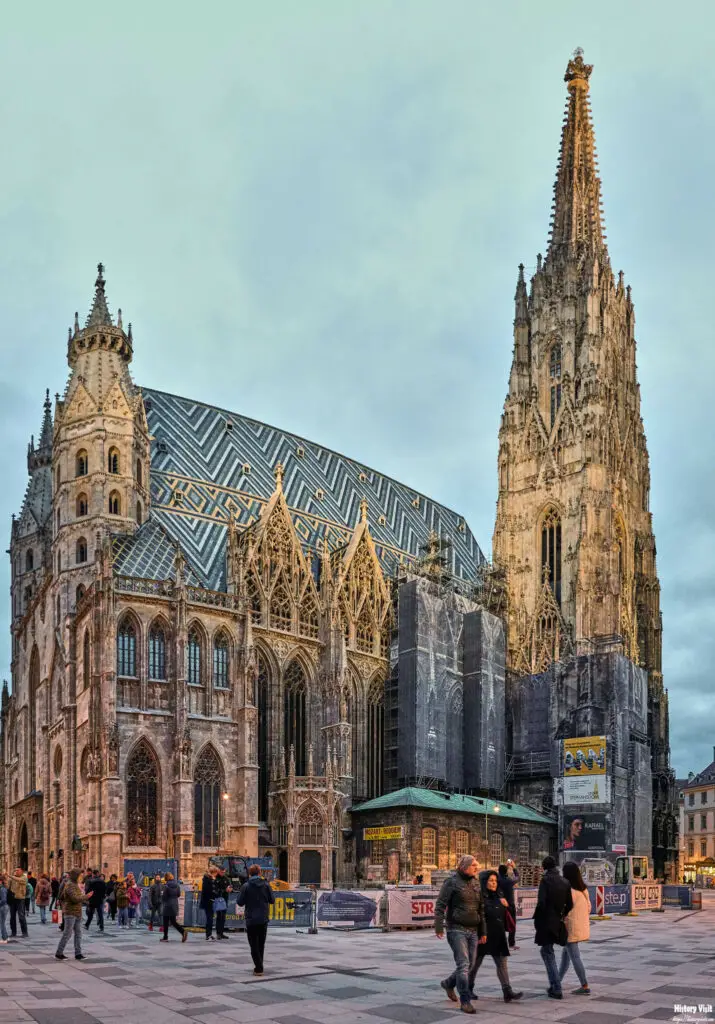
Introduction
St. Stephen’s Cathedral, or Stephansdom, stands as an iconic symbol of Vienna, Austria, and embodies the city’s rich cultural and spiritual heritage. For centuries, it has been a central figure in the life of Vienna, witnessing historical events, hosting significant religious ceremonies, and attracting countless visitors with its architectural grandeur. As the mother church of the Roman Catholic Archdiocese of Vienna, St. Stephen’s holds a revered place in the hearts of both locals and tourists.
The cathedral’s construction began in the 12th century, but it was through the Gothic transformation that it gained its current majestic form. Over the years, it has undergone numerous renovations and restorations, each adding layers to its historical and architectural narrative. Today, St. Stephen’s Cathedral not only serves as a place of worship but also as a testament to Vienna’s artistic and cultural evolution.
In this article, we will explore the many facets of St. Stephen’s Cathedral, from its foundational history and Gothic transformation to its interior artistry and cultural milestones. We will delve into its spiritual significance and offer practical tips for modern-day visitors wishing to experience its splendor firsthand.
Foundation and Early Development
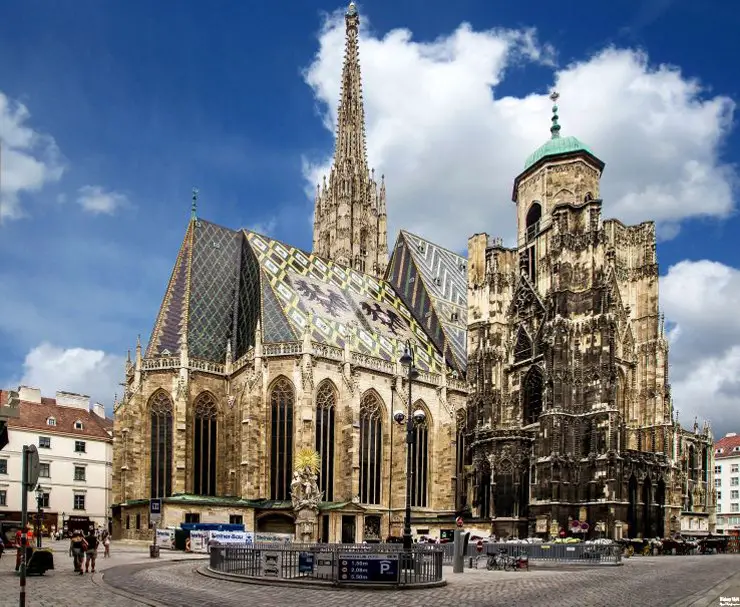
The origins of St. Stephen’s Cathedral date back to 1137, when the first Romanesque church was commissioned by Margrave Leopold IV. This initial structure was relatively modest, reflecting the architectural styles and religious needs of the time. However, it laid the groundwork for what would become a monumental religious and cultural site. The early development phase saw the establishment of the cathedral’s foundational elements, including its initial nave and modest towers.
Significant figures played crucial roles in the early stages of the cathedral’s development. One such figure was Duke Rudolph IV, known as “Rudolph the Founder,” who was instrumental in expanding and enhancing the cathedral during the mid-14th century. His vision was to create a grand Gothic structure that would not only serve as a place of worship but also as a symbol of Vienna’s growing importance in the Holy Roman Empire.
The transition from the original Romanesque design to a more elaborate Gothic structure began under Rudolph IV’s patronage. This period marked the start of significant architectural enhancements, including the extension of the nave and the construction of the choir and transepts. These early developments set the stage for the subsequent Gothic transformation, which would ultimately define St. Stephen’s as one of the most remarkable cathedrals in Europe.
Gothic Transformation and Architectural Marvels
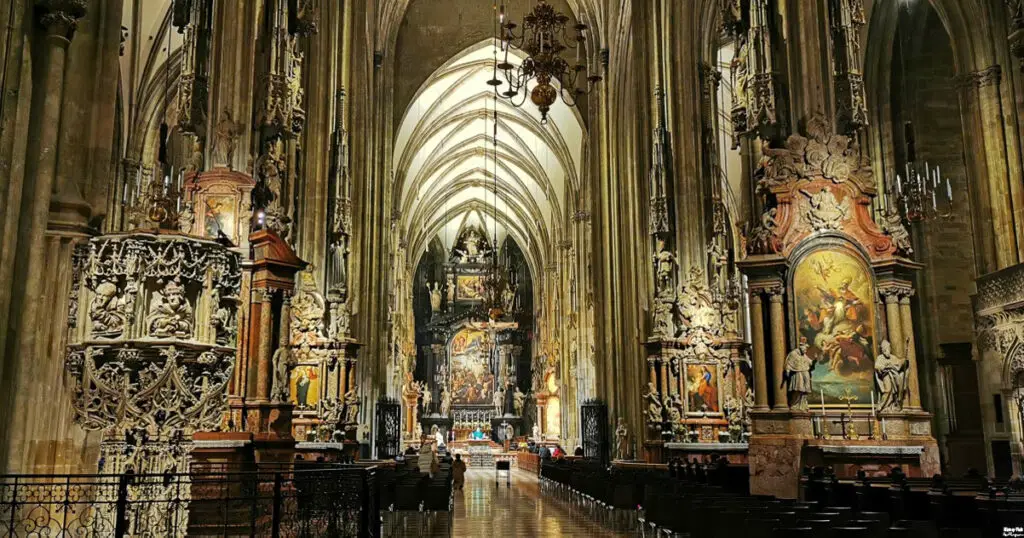
The Gothic transformation of St. Stephen’s Cathedral began in earnest in the late 14th century and continued for several centuries. This architectural evolution was marked by the construction of the South Tower, or “Steffl,” which rises to a height of 136 meters (446 feet) and remains one of the tallest church towers in the world. The South Tower, completed in 1433, is adorned with intricate stone carvings and sculptures, showcasing the height of Gothic architectural artistry.
The North Tower, although shorter and never fully completed, adds to the cathedral’s distinctive silhouette. Originally intended to mirror the South Tower, construction on the North Tower was halted in the mid-16th century due to a combination of financial constraints and changing architectural tastes. Today, the North Tower houses the Pummerin Bell, one of the largest free-swinging bells in Europe, which rings out on special occasions, resonating throughout Vienna.
One of the most striking features of St. Stephen’s Cathedral is its colorful, patterned tile roof. This roof, added in the 15th century, consists of over 230,000 glazed tiles that create a mosaic of the double-headed eagle, symbolizing the Habsburg dynasty, and the coats of arms of the city of Vienna and Austria. The vibrant roof not only serves a practical purpose in protecting the structure but also stands as a visual representation of the city’s rich heritage and the cathedral’s enduring legacy.
Interior Grandeur and Artistry

Stepping inside St. Stephen’s Cathedral, visitors are immediately struck by the grandeur and intricate artistry that defines its interior. The nave, with its soaring vaulted ceilings and slender columns, creates an atmosphere of reverence and awe. The interior design reflects the cathedral’s Gothic heritage, with pointed arches and ribbed vaults that draw the eye upward, emphasizing the verticality and spiritual aspirations of the structure.
The High Altar, completed in the mid-17th century, is a masterpiece of Baroque art. Its elaborate design features a central painting depicting the stoning of St. Stephen, the cathedral’s patron saint, surrounded by statues of saints and angels. The side altars, each with their own unique artistic elements, contribute to the cathedral’s rich tapestry of religious art. Among them, the Altar of the Holy Blood and the Altar of St. Andrew stand out for their historical and artistic significance.
One of the most notable pieces within the cathedral is the stone pulpit, crafted by Anton Pilgram in the early 16th century. This pulpit, intricately carved from limestone, features depictions of the four original Doctors of the Church: St. Augustine, St. Ambrose, St. Gregory the Great, and St. Jerome. The base of the pulpit is adorned with a self-portrait of Pilgram, adding a personal touch to this remarkable work of art. Additionally, the cathedral houses numerous stained glass windows that illuminate the interior with a kaleidoscope of colors, depicting scenes from the Bible and the lives of saints.
Cultural and Historical Milestones
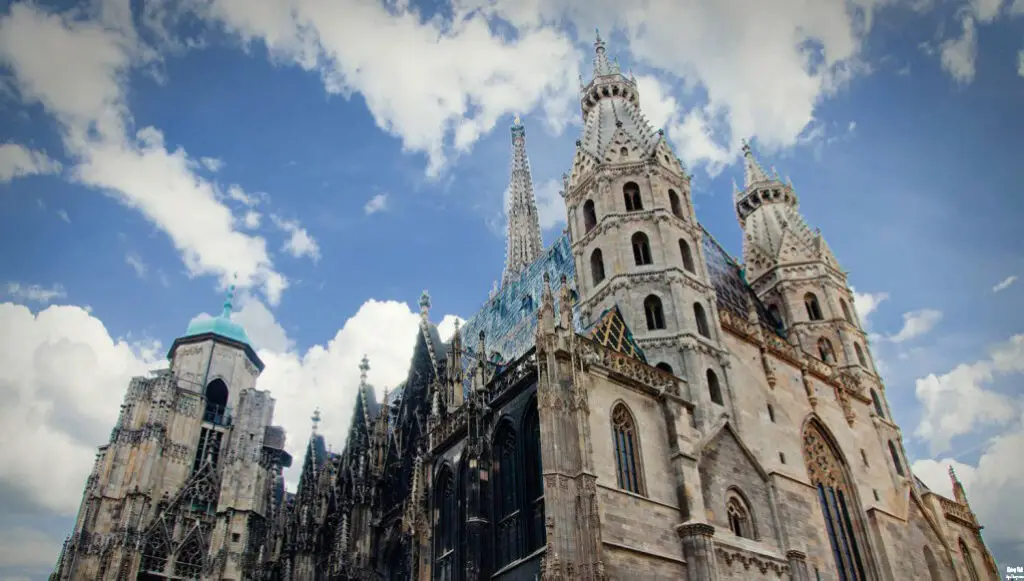
St. Stephen’s Cathedral has been a silent witness to many significant cultural and historical events in Vienna’s history. During the Habsburg dynasty, it served as the site for numerous royal ceremonies, including weddings, coronations, and funerals. The cathedral’s historical importance is further highlighted by its role during World War II when it suffered considerable damage but was subsequently restored, symbolizing the resilience and enduring spirit of Vienna.
The cathedral has also been a hub for cultural events, particularly music. It has hosted performances by some of Austria’s most renowned musicians and composers, including Wolfgang Amadeus Mozart, who was married at St. Stephen’s and whose funeral service was held there. The cathedral’s impressive acoustics and historical ambiance make it a favored venue for concerts and public ceremonies, continuing its legacy as a center of cultural life in Vienna.
Preservation and restoration efforts have been ongoing to maintain the cathedral’s structural integrity and historical significance. Significant projects in recent decades have focused on restoring the intricate stonework, repairing damage from weathering and pollution, and preserving the vibrant tile roof. These efforts ensure that St. Stephen’s Cathedral remains a living monument to Vienna’s architectural and cultural heritage.
Spiritual and Religious Significance
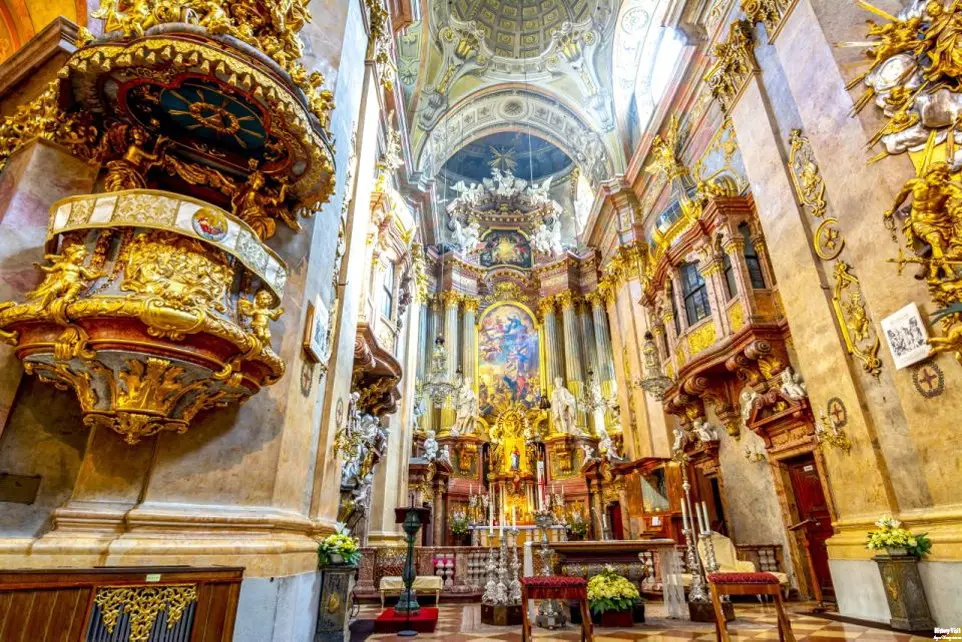
Beyond its cultural and historical roles, St. Stephen’s Cathedral is foremost a place of spiritual significance and religious devotion. It serves as the mother church of the Roman Catholic Archdiocese of Vienna and hosts numerous religious ceremonies, including Masses, baptisms, and weddings. The cathedral’s spiritual atmosphere is enhanced by its grandiose architecture and sacred artworks, which inspire reverence and contemplation among visitors and worshippers alike.
The cathedral’s catacombs and crypt hold particular religious and historical significance. The catacombs, located beneath the cathedral, are the final resting place for many notable figures, including bishops and members of the Habsburg dynasty. The Ducal Crypt, specifically, contains the remains of 15 members of the Habsburg family, reflecting the close connection between the cathedral and Austria’s royal history.
Religious ceremonies and events continue to play a vital role in the life of St. Stephen’s Cathedral. Major religious holidays such as Christmas and Easter see the cathedral filled with worshippers, while special services and events draw attendees from across Vienna and beyond. The cathedral’s role in the spiritual life of the city is a testament to its enduring significance as a beacon of faith and devotion.
Exploring St. Stephen’s Today
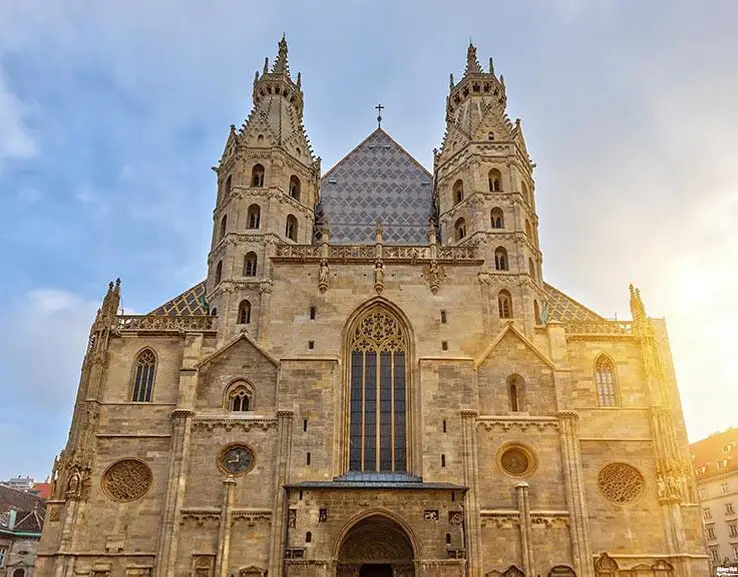
For those planning to visit St. Stephen’s Cathedral, practical information and tips can enhance the experience. The cathedral is open to visitors throughout the year, with guided tours available that offer in-depth insights into its history, architecture, and artworks. Audio guides are also available for those who prefer to explore at their own pace. Key highlights for visitors include the South Tower, which offers panoramic views of Vienna, and the cathedral’s intricate interior chapels and altars.
To make the most of a visit, it is recommended to visit during the early morning or late afternoon when the light enhances the beauty of the stained glass windows. The cathedral’s acoustics make it an ideal location for attending a concert or musical performance, providing a unique cultural experience. Comfortable footwear is advised, as exploring the cathedral involves considerable walking and, in the case of the South Tower, climbing steep steps.
Photography is allowed in most areas of the cathedral, though it is important to be respectful of the sacred nature of the space and the other visitors, especially during services. Souvenir shops located nearby offer a range of items, from religious artifacts to local crafts, allowing visitors to take home a piece of their experience.
Conclusion
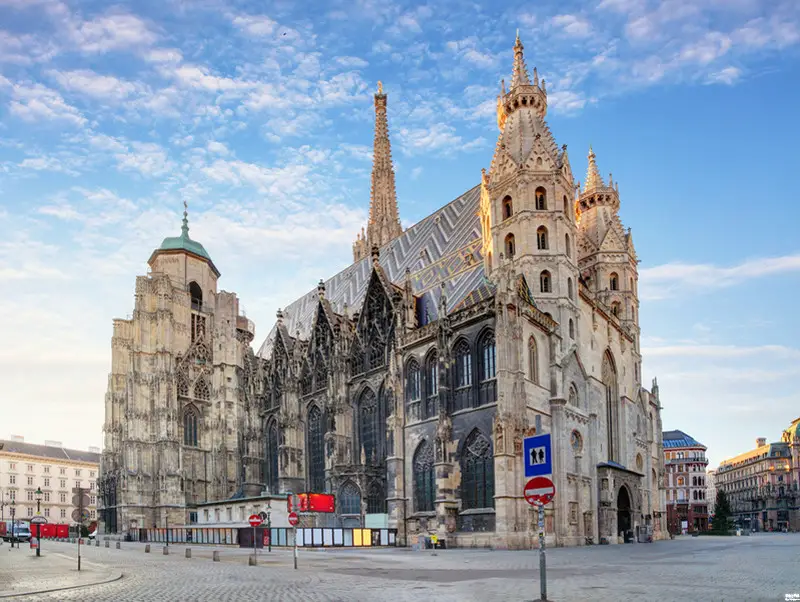
St. Stephen’s Cathedral stands as a magnificent testament to Vienna’s cultural, historical, and spiritual heritage. Its Gothic architecture, rich interior artistry, and significant historical events make it a landmark of unparalleled importance. From its foundational beginnings and Gothic transformation to its role in Vienna’s cultural and religious life, the cathedral continues to inspire awe and reverence.
The cathedral’s enduring legacy is reflected in its ongoing preservation efforts and the countless visitors it attracts each year. St. Stephen’s is not just a relic of the past but a living monument that continues to play a vital role in the cultural and spiritual life of Vienna. Its blend of architectural beauty, historical significance, and spiritual atmosphere makes it a must-visit destination for anyone exploring the heart of Austria. As you explore St. Stephen’s Cathedral, you are walking through centuries of history, art, and faith. It is a place where the past and present converge,
offering a profound and enriching experience that leaves a lasting impression on all who visit. Whether you come for its historical significance, architectural splendor, or spiritual resonance, St. Stephen’s Cathedral remains a timeless beacon in the heart of Vienna.


